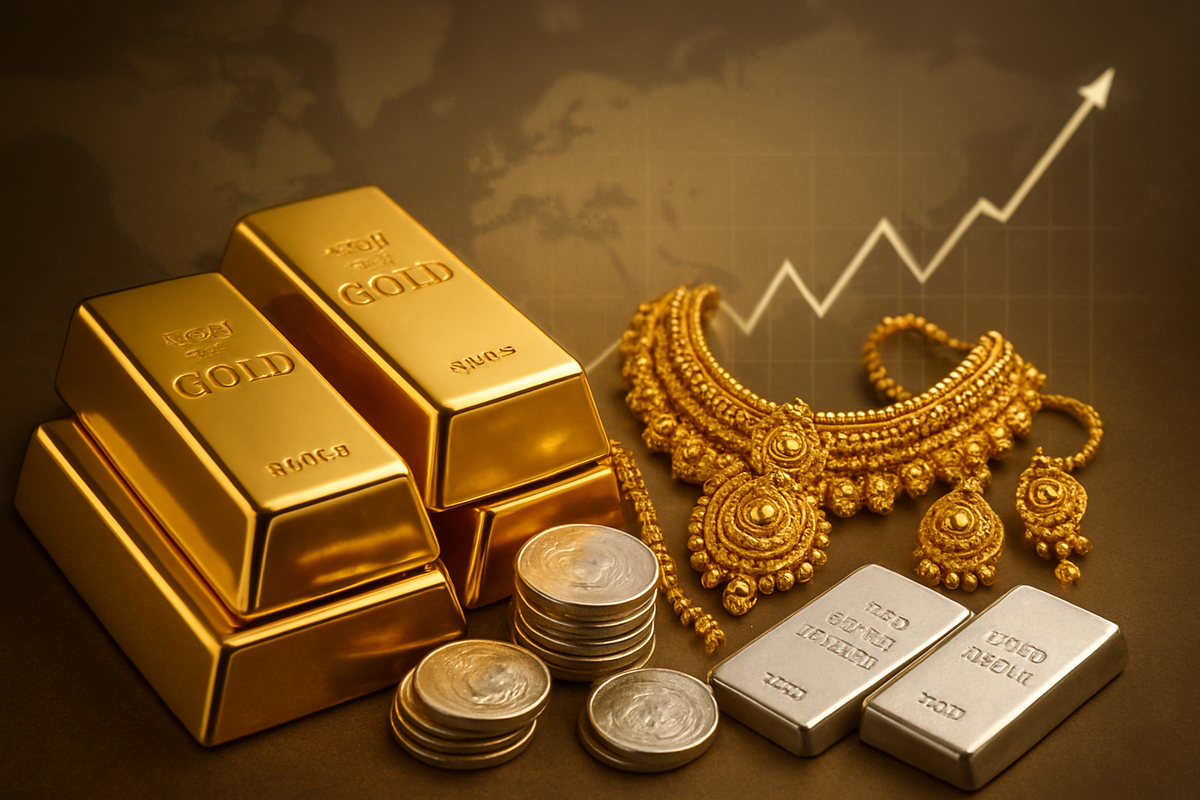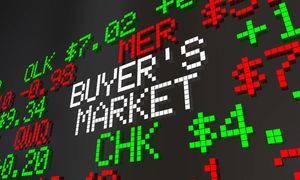
The Indian precious metals market witnessed a spectacular rally on Monday, November 10, 2025, as gold prices in the national capital surged by a notable Rs 1,300, breaching the significant Rs 1,25,000 mark to settle at Rs 1,25,900 per 10 grams. This robust upward movement was mirrored in the silver market, where prices bounced by a substantial Rs 2,460, reaching Rs 1,55,760 per kilogram. This significant uptick signals heightened investor interest and a potential shift in market dynamics, driven by a confluence of global and domestic factors, with immediate implications for consumers, jewelers, and financial institutions across the nation.
This dramatic surge underscores the enduring appeal of gold and silver as safe-haven assets, particularly within the Indian context where these metals hold profound cultural and economic significance. The rally suggests a period of continued volatility and elevated prices, prompting experts to advise a strategy of buying on dips for long-term investors. As the festive and wedding seasons approach, demand is expected to remain robust, further supporting the bullish sentiment in the market.
A Deep Dive into the Precious Metals Frenzy
The recent ascent in gold and silver prices is not an isolated event but rather the culmination of several interconnected factors influencing both international and domestic markets. On November 10, 2025, the sharp increase saw gold's value per 10 grams climb to Rs 1,25,900, while silver's per kilogram price reached Rs 1,55,760. This movement reflects a broader trend of investor flight to safety amidst a backdrop of global economic uncertainties.
The Indian precious metals market, characterized by its deep cultural roots and significant import dependency, is particularly sensitive to global cues and the strength of the Indian rupee against the US dollar. A depreciating rupee often translates to higher local prices, even if international rates remain stable. The current rally has been primarily fueled by strong positive global sentiment towards bullion and a weakening US dollar, which makes dollar-denominated assets like gold cheaper for international buyers.
Adding to the impetus are growing concerns over the health of the US economy. Reports indicating a softened jobs market, declining consumer sentiment, and the specter of a prolonged US government shutdown have collectively driven renewed safe-haven demand. Furthermore, market expectations of another interest rate cut by the US Federal Reserve in December have made non-yielding assets such as gold more attractive, as lower interest rates reduce the opportunity cost of holding precious metals.
Geopolitical tensions also continue to cast a long shadow over global markets. Ongoing conflicts like the Russia-Ukraine war, instability in the Red Sea, and persistent US-China trade disputes have heightened risk aversion among investors, directing capital towards traditional safe havens. Simultaneously, central banks worldwide have been consistently accumulating gold reserves, seeking diversification and a hedge against global volatility, thereby contributing significantly to the overall demand.
For silver, beyond its safe-haven appeal, its extensive industrial applications play a crucial role. Sectors such as semiconductors, photovoltaics (solar panels), water purification, batteries, and touchscreen displays are experiencing sustained demand, particularly in Asia. The solar PV sector, in particular, is witnessing substantial annual growth, underpinning silver's industrial value. Despite the already high prices, demand in India has shown little sign of slowing, partly due to a "fear of missing out" (FOMO) among consumers and investors who anticipate further price appreciation, solidifying the market's bullish outlook.
Winners and Losers in the Precious Metals Boom
The unprecedented rally in gold and silver prices creates a distinct landscape of winners and losers across various sectors of the Indian economy, particularly among public companies whose business models are intrinsically linked to precious metals. While gold loan companies and mining firms are poised for substantial gains, the scenario for jewelry retailers presents a more nuanced picture of both opportunities and challenges.
Gold Loan Companies: Riding the Golden Wave The most immediate and significant beneficiaries of soaring gold prices are undoubtedly the gold loan Non-Banking Financial Companies (NBFCs). Companies such as Muthoot Finance Ltd. (NSE: MUTHOOTFIN), Manappuram Finance Ltd. (NSE: MANAPPURAM), and IIFL Finance (NSE: IIFLFINANCE), which lend against gold collateral, see a direct enhancement in their core business. A higher valuation of pledged gold translates to an increase in their Assets Under Management (AUM), allowing them to offer larger loan amounts against the same quantity of gold. This not only boosts loan growth but also improves their net interest margins (NIMs) and reduces credit costs, as the increased collateral value acts as a stronger safety net against defaults. Historically, these companies' stock prices have rallied in tandem with gold prices, often outperforming broader market indices. Analysts have reiterated 'buy' ratings for firms like Muthoot Finance, projecting significant AUM and earnings growth driven by this bullish trend.
Jewelry Retailers: A Mixed Bag of Fortunes For India's prominent jewelry retailers, including Titan Company Ltd. (NSE: TITAN) (with brands like Tanishq and CaratLane), Kalyan Jewellers India Ltd. (NSE: KALYANJWL), Rajesh Exports Ltd. (NSE: RAJESHEXPO), Senco Gold Ltd. (NSE: SENCO), and Thangamayil Jewellery Ltd. (NSE: THANGAMAYL), the impact is more complex. On one hand, companies holding substantial gold inventory will see an appreciation in their asset value, providing a short-term boost to their balance sheets. Even if sales volumes experience a dip due to higher prices, the increased per-gram value of gold can still lead to stable or even higher revenue figures in value terms. Titan Company, for instance, has previously reported robust revenue growth in its jewelry segment despite rising gold prices, partly by adapting to consumer preferences for lighter designs and benefiting from increased sales of investment-grade gold coins.
However, the surge also brings challenges. Extremely high prices can deter price-sensitive consumers, potentially leading to a decline in sales volumes at lower price points. This necessitates increased working capital to maintain the same level of inventory, which could lead to higher borrowing costs. Furthermore, intense competition and a potential shift in consumer behavior towards alternatives like gold ETFs or digital gold could exert pressure on profit margins. While some investment banks may view jewelry retailers as a 'good buy' during a rally due to gold's investment appeal, others caution about the potential for margin contraction and negative stock performance if volume sales suffer.
Mining Companies and Financial Institutions: Indirect and Direct Gains Though India's domestic gold and silver mining sector is relatively small compared to its consumption, companies involved directly benefit. Deccan Gold Mines Ltd. (BOM: 512068), India's first publicly listed gold mining company, and Hindustan Zinc Ltd. (NSE: HINDZINC), a major producer of silver as a by-product, will see a direct increase in their revenues and profitability as the realization prices for their mined output climb. This can also incentivize further exploration and expansion. Similarly, financial institutions managing gold-backed products like SBI Gold ETF (NSE: SBIGETS) and Nippon India Gold ETF (NSE: NIPPONIND) will experience higher inflows and Assets Under Management (AUM), boosting their fee income as investor interest in safe-haven assets surges. Banks with significant gold loan portfolios will also see an improvement in their asset quality and reduced risk due to the enhanced collateral value.
Broader Implications: A Shifting Economic Landscape
The substantial rally in gold and silver prices in the Indian market on November 10, 2025, extends far beyond the immediate gains for investors and businesses, signaling deeper shifts in both domestic and global economic landscapes. This event fits into a broader narrative of heightened global uncertainty, inflationary pressures, and strategic re-evaluations by central banks and individual investors alike.
Globally, the rally underscores a persistent flight to safety. Factors such as ongoing geopolitical tensions—including the Russia-Ukraine conflict and Red Sea instability—coupled with concerns over the US economy, including a weakened jobs market and potential government shutdowns, are driving investors towards traditional safe havens. The expectation of further interest rate cuts by the US Federal Reserve also diminishes the appeal of interest-bearing assets, making non-yielding precious metals more attractive. Domestically, India's deep cultural affinity for gold means that while high prices might temper jewelry demand in volume, investment demand remains robust, fueled by a "fear of missing out" and the perception of gold as a reliable hedge against inflation and a weakening Indian Rupee. For silver, the surge also highlights strong industrial demand from burgeoning sectors like solar energy and electronics, indicating robust underlying economic activity in these areas.
The ripple effects of such a significant price surge are widespread. In the jewelry industry, while asset values appreciate, retailers may face challenges with inventory management and working capital needs, potentially shifting consumer preferences towards lighter designs or even digital gold. This could strain smaller jewelers while larger players like Titan Company Ltd. (NSE: TITAN) might leverage their scale and diversified offerings. For the broader financial sector, while gold loan companies benefit, banks with gold loan portfolios also see improved asset quality. The government, however, faces a growing challenge: as India is a major gold importer, rising prices inflate the import bill, exacerbating the current account deficit and potentially pressing foreign exchange reserves. This could lead to a delicate balancing act between managing demand and supporting the domestic industry.
From a regulatory and policy standpoint, the Indian government is likely to monitor the situation closely. Historically, significant price rallies have often led to policy interventions aimed at managing demand and curbing illicit trade. Potential measures could include adjustments to import duties on gold and silver, or stricter import restrictions, as seen with recent restrictions on silver imports. There will also be a continued push to financialize gold through schemes like Sovereign Gold Bonds (SGBs) and Gold Exchange Traded Funds (ETFs), encouraging a shift from physical holdings to financial instruments to reduce reliance on imports. The Reserve Bank of India (RBI) will also be keenly observing the inflationary impact of rising precious metal prices, which could influence future monetary policy decisions. Comparing this rally to historical precedents, such as the surges during the 1970s oil crisis, the 2008 financial crisis, or the 2020 pandemic, reveals similar underlying drivers of global uncertainty and inflation hedging. While the magnitude of the current rally is substantial, it echoes these past events in reinforcing gold and silver's role as critical assets in times of economic flux.
The Road Ahead: Navigating the Precious Metals Landscape
Following this significant rally, the Indian gold and silver markets are poised for a period of dynamic shifts, characterized by both short-term volatility and a robust long-term bullish outlook. Market participants, investors, and consumers alike will need to adapt to new price realities and strategic imperatives in the coming months and years.
In the short term, the market is expected to exhibit continued volatility and consolidation. After reaching record highs, both gold and silver are likely to undergo corrections, with profit-booking contributing to price fluctuations. Experts are advising a "buy on dips" strategy, viewing any near-term price moderation as strategic entry points for long-term gains. The upcoming Indian wedding season is anticipated to provide crucial underlying support, potentially triggering a revival in demand that could lift prices after any initial festive season lull. Analysts project gold to trade within a broader range, with key support levels around Rs 1,17,000–Rs 1,15,000 per 10 grams, while silver may oscillate between Rs 1,39,000 and Rs 1,54,000 per kilogram in the near future.
Looking further ahead, the long-term outlook for precious metals in India remains overwhelmingly bullish. Persistent global economic uncertainties, inflationary pressures, and geopolitical conflicts will continue to bolster gold's appeal as a safe-haven asset. Central banks worldwide, particularly in emerging markets, are diversifying their reserves by increasing gold accumulation, providing structural support to prices. For silver, its burgeoning role in industrial applications—especially in renewable energy (solar panels), electric vehicles, and 5G infrastructure—is a significant long-term demand driver. This industrial uptake, combined with its monetary value, is expected to support sustained price appreciation, with some analysts projecting Indian silver prices to reach Rs 2.4 lakh per kilogram by 2026. India's evolving role as a hub for gold innovation and manufacturing by 2030, supported by cultural affinity and policy reforms, will further solidify its position in the global precious metals market.
Strategic pivots are imperative across the value chain. Jewelers, facing sustained high prices, will need to innovate by offering lighter designs, lower-carat gold, or studded jewelry to cater to price-sensitive consumers. Digital channels will become increasingly crucial for engagement and sales. Investment firms will likely develop more sophisticated risk management tools and diversified precious metal investment products, given the record inflows into gold and silver Exchange Traded Funds (ETFs). Mining and refining companies, especially for silver, will need to double down on production and enhance supply chain resilience to meet surging demand. From a policy perspective, a comprehensive, long-term gold policy will be essential to support localization, manage India's significant import dependence, and address the fiscal impact of schemes like Sovereign Gold Bonds.
Wrap-Up: A Golden Future Amidst Evolving Dynamics
The recent, dramatic rally in Indian gold and silver prices to Rs 1,25,900 per 10 grams and Rs 1,55,760 per kilogram respectively on November 10, 2025, marks a pivotal moment in the nation's precious metals market. This surge, fueled by global economic anxieties, geopolitical tensions, central bank buying, and robust industrial demand for silver, underscores the enduring significance of these metals as both cultural treasures and critical investment assets. The event highlights a clear differentiation in impact: gold loan companies are poised for significant growth, while jewelry retailers face the dual challenge of appreciating inventory and potentially softening consumer demand at higher price points, necessitating innovative product offerings and business strategies.
Moving forward, the market is expected to navigate a period of short-term volatility and corrections, offering strategic entry points for long-term investors. However, the overarching sentiment for both gold and silver remains bullish, underpinned by persistent global uncertainties and strong industrial demand, particularly for silver. India's unique position as a major consumer and its cultural ties to precious metals will continue to play a crucial role in shaping global market dynamics. The shift towards financialization of gold and silver through ETFs and digital platforms presents significant opportunities for investors seeking convenient and transparent avenues.
Investors should closely watch global economic indicators, central bank policy decisions (especially from the US Federal Reserve), and the evolving geopolitical landscape. Domestically, monitoring government policies on import duties, initiatives to curb smuggling, and the success of financialization schemes will be key. For consumers, informed decision-making, adapting purchasing habits towards lighter jewelry or silver, and leveraging auspicious buying periods will be crucial. While the market may experience intermittent corrections, the long-term fundamentals suggest that gold and silver will continue to shine brightly, serving as indispensable components of diversified portfolios and cultural heritage in the years to come.
This content is intended for informational purposes only and is not financial advice






